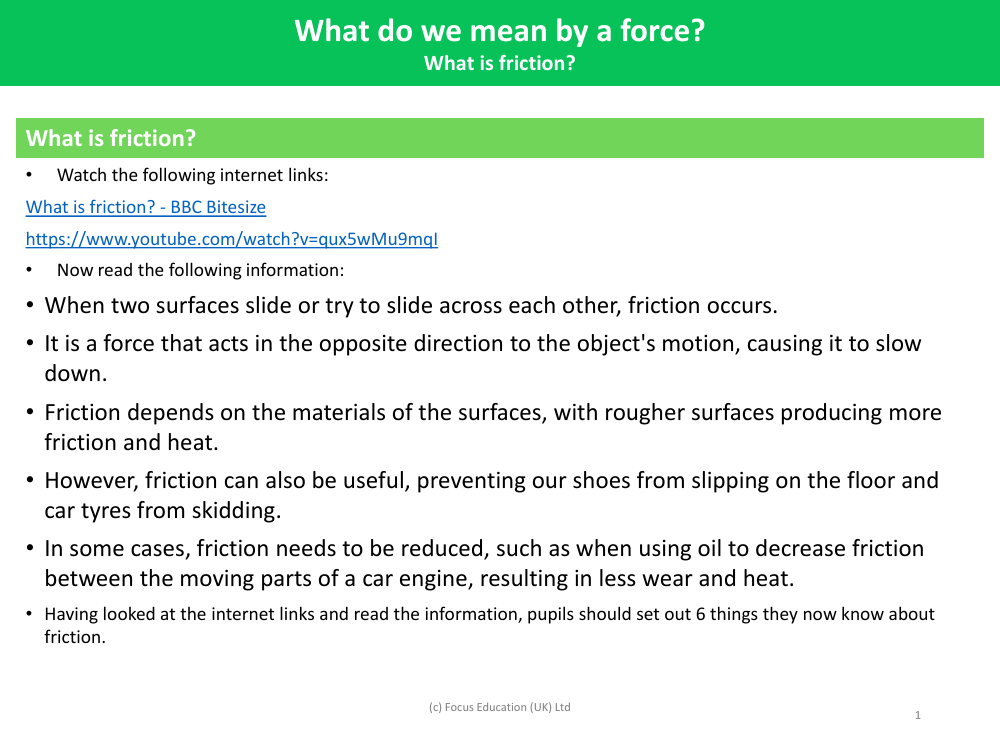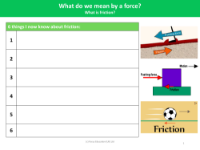What is friction? - Magnets and Forces - Year 3

Science Resource Description
Friction is a fundamental force encountered when two surfaces interact with each other, particularly when they slide or attempt to slide across one another. This force is always acting in the opposite direction to the movement of the object, effectively slowing it down. The amount of friction generated can vary depending on the texture of the surfaces in contact; rougher surfaces tend to create more friction and can even produce heat as a result of the resistance they offer against motion.
Despite sometimes being seen as a hindrance, friction is also incredibly useful in our daily lives. It provides the necessary grip that prevents us from slipping when we walk, and it helps car tyres maintain traction on the road to avoid skidding. However, in certain situations, it is beneficial to reduce friction. This can be achieved by using lubricants, such as oil in a car engine, which minimises the friction between moving parts, leading to decreased wear and less heat production. Understanding friction is crucial for both harnessing its positive effects and mitigating its negative impacts.




